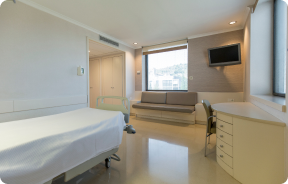
Consultation area

Castro Domínguez FranciscoRheumatology
 Centro Médico Teknonen/health-centers/centro-medico-teknon
Centro Médico Teknonen/health-centers/centro-medico-teknon- Centro Médico Teknonen/health-centers/centro-medico-teknonHospital Universitari General de Catalunyaen/health-centers/hospital-universitari-general-catalunya
 Centro Médico Teknonen/health-centers/centro-medico-teknonHospital Universitari Sagrat Coren/health-centers/hospital-universitari-sagrat-cor
Centro Médico Teknonen/health-centers/centro-medico-teknonHospital Universitari Sagrat Coren/health-centers/hospital-universitari-sagrat-cor
Ehlers-Danlos type III syndrome: what are the presentation symptoms, how is it diagnosed and how is it treated?
Ehlers-Danlos Syndrome (EDS) Type III, also known as Hypermobility EDS, is a hereditary connective tissue disorder characterized by joint hypermobility, skin hyperextensibility, and a variety of other symptoms.
Presentation Symptoms:
- Joint Hypermobility: Hypermobility of joints is a hallmark feature. This can lead to joint pain, dislocations, and frequent sprains. Individuals with EDS Type III often display a "double-jointed" appearance.
- Chronic Pain: Joint pain and chronic musculoskeletal pain are common, and it can be severe and disabling.
- Skin Changes: The skin is often hyperextensible and may be velvety or soft to the touch. Individuals with EDS Type III may bruise easily and develop atrophic scars.
- Musculoskeletal Problems: Muscle weakness, easy fatigability, and a tendency to develop myalgia (muscle pain) are common.
- Joint Instability: Joint instability, subluxations (partial dislocations), or full dislocations are frequent, affecting the shoulders, knees, hips, and other joints.
- Gastrointestinal Issues: Some individuals may experience gastrointestinal problems like irritable bowel syndrome.
- Autonomic Dysfunction: Autonomic dysfunction can manifest as problems with heart rate and blood pressure regulation, leading to symptoms like orthostatic intolerance (difficulty standing up), dizziness, and fainting.
- Chronic Fatigue: Fatigue is a common symptom, often related to chronic pain and sleep disturbances.
- Skin Fragility: Skin fragility can lead to easy bruising, tearing, and poor wound healing.
Diagnosis:
- Clinical Evaluation: A detailed medical history and physical examination, focusing on joint hypermobility, skin changes, and the presence of other EDS-related features.
- Genetic Testing: While clinical diagnosis is often sufficient, genetic testing can confirm the specific subtype of EDS when there is diagnostic uncertainty. Genetic testing is increasingly used for precision diagnosis of various EDS subtypes.
- Diagnostic Criteria: EDS Type III is diagnosed based on clinical criteria set forth in the 2017 International Classification of EDS.
Treatment:
- Symptomatic Management: The primary focus is on managing symptoms and improving the quality of life. This may involve:
- Physical Therapy: Targeted exercises to stabilize joints, improve muscle strength, and manage pain.
- Pain Management: Medications and pain management strategies may be used to alleviate musculoskeletal pain.
- Orthotics and Assistive Devices: Braces and other orthotic devices can provide joint support.
- Counseling: Psychological support to help individuals cope with chronic pain and its impact on daily life.
- Cardiac Monitoring: Regular cardiac assessments are necessary due to the risk of mitral valve prolapse and aortic root dilation in some cases.
- Gastrointestinal Management: Treatment for gastrointestinal symptoms may be necessary, depending on individual needs.
- Autonomic Dysfunction Management: Managing autonomic dysfunction may involve lifestyle modifications and medications.
- Wound Care: Skin fragility may require careful wound care to prevent complications.
- Genetic Counseling: Individuals and families may benefit from genetic counseling for understanding inheritance patterns and risk in family members.



































